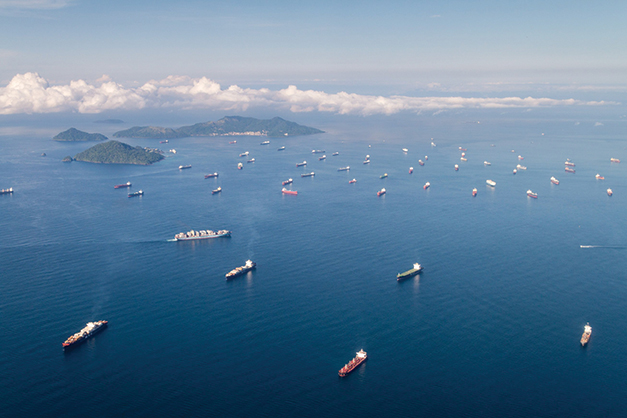
Drought Creates Traffic Jam at Panama Canal
February 26, 2024
Written By Adam Buckallew
A withering drought has crippled one of the world’s most crucial maritime trade routes. Ships hoping to cross the Panama Canal have experienced significant delays since August 2023, when an unprecedented dry spell forced canal officials to limit traffic on the waterway.
The Panama Canal requires 52 million gallons of freshwater—enough water to fill 104 Olympic-size swimming
pools—to lift and lower ships into and out of its waterway. The water is sourced from artificial lakes that rely
on rainfall to recharge the reservoirs.
The severe drought prompted Panamanian authorities to slash daily ship crossings to 24, down from 38 per
day in a normal year. Vessel traffic has been dramatically slowed or stalled due to the drought-induced bottleneck.
The traffic jam on the canal has forced shipping companies to choose between three options, all of which are
painful. Option one, they can wait in line for days or weeks for an open slot in the schedule to make the 50-mile crossing. Option two, they can pay millions of dollars to jump the line if a booked reservation is canceled. Or option three, they can reroute their ships around South America or Africa. Every option adds expense, pushing costs for crew, fuel and freight leases higher. Additionally, sailing the longer routes can add up to two weeks to shipping times.
In an interview with DTN Progressive Farmer, Jay O’Neil of HJ O’Neil Commodity Consulting said he
expected shipping restrictions imposed by the Panama Canal Authority to remain in place through mid-summer.
“The vessel booking slots will remain at 24 for the foreseeable future; at least until June-July,” he said in late January.
As traffic on the Panama Canal remains limited, disruptions on the Suez Canal, which connects the Mediterranean Sea with the Red Sea, have further complicated shipping options. Attacks on commercial ships in the Red Sea by Yemen’s Houthi rebels have rerouted vessels away from the crucial corridor connecting Europe and Asia and around Africa’s Cape of Good Hope.
The disruptions have been especially tough for bulk grain exporters hauling crops from the U.S. Gulf of Mexico
to Asia. Container vessels and ships on more regular schedules are given priority crossing the Panama Canal, and bulk commodity carriers are generally among the last customers to be given passage. Dry bulk vessel transits on the Panama Canal have dropped by roughly 60% since the restrictions began.
Unfortunately, the bottleneck is unlikely to improve any time soon. Panama’s annual dry season began in
December and usually lasts until April or May. Traffic congestion and draft restrictions are expected to linger even if the rains return on time.
“I don’t think anyone is optimistic about a near-term solution in the Red Sea,” O’Neil said while discussing the
current challenges of agribulk exporters. “Without free movement for transit through the Panama and Suez canals, global shipping is now back to living in the 1800s. Some logistical supply chains are almost double what they used to be.”
Traders and analysts agree that international grain shipments will have to take the long way around for the foreseeable future.

